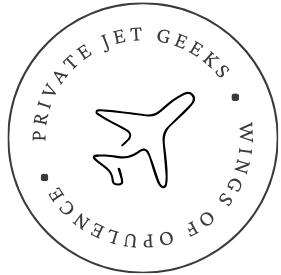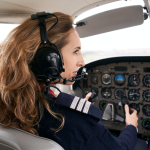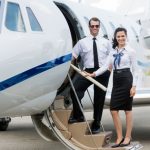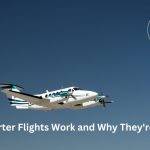Are you thinking about becoming a private jet pilot? Gaining the necessary certifications to operate a private jet requires a number of steps, but it can be an extremely fulfilling profession.
Find out more about the qualifications needed to become a private jet pilot as well as the types of jobs you might be able to pursue.
How to Become a Private Jet Pilot
Getting your private pilot certificate is the first step towards becoming a jet pilot if you don’t already have any flying certifications.
There are more ratings and certificates to earn after receiving your private pilot certificate. If you want to work in aviation as a career, you will require them. This is a quick summary.
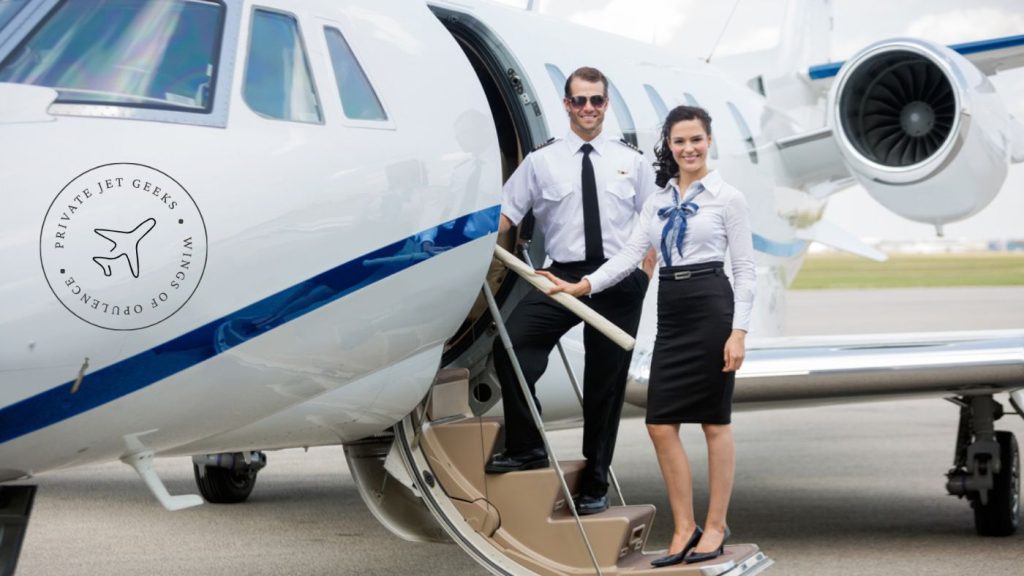
1. The Private Pilot Certificate
Getting your private pilot certificate is one of the first steps in becoming a private jet pilot.
You must make sure you fulfill the requirements, which include speaking English fluently.
Although there is no minimum age to begin learning to fly, you need to be at least 16 to fly alone and 17 to get a pilot’s certificate.
A minimum of 40 hours of flight time is also required, and those hours must be a mix of solo flight, in which you are the only passenger in the aircraft, and dual flight, in which you fly alongside a certified flight instructor.
Within the 40 hours, you must have at least:
10 hours spent solely yourself
You will practice landings and takeoffs as well as the techniques you have learned throughout your training during the solo period.
Additionally, you must log at least five hours of cross country alone time.
A cross country flight is characterized by a straight line distance between the takeoff and landing points of at least 50 nautical miles.
You will also have to land and take off from an airport that has an operational control tower.
20 hours of dual time
The twenty hours of instruction are divided into sections including nighttime training, cross country flight training, airport operations, and simulated instrument meteorological conditions (IMC).
Along with this, you will learn various training maneuvers, emergency protocols, preflight and postflight procedures, and more.
Keep in mind that, while the Federal Aviation Administration requires a minimum of 40 hours, many people take much longer to become proficient.
You will also need to have a medical examination by an FAA medical examiner.
In addition to flight training, you will need to be very familiar with a wide range of ground knowledge, including weather and aircraft systems, regulations, navigation, and much more.
To demonstrate your ground knowledge, you must take an FAA knowledge exam, which is a computer based exam that can be taken at a certified testing center.
Once you have passed the knowledge exam after completing your flight training, you will be scheduled for your practical test, also known as the check ride.
The check ride consists of two parts: an oral portion on the ground and a flight portion in which you suggest your abilities in the aircraft.
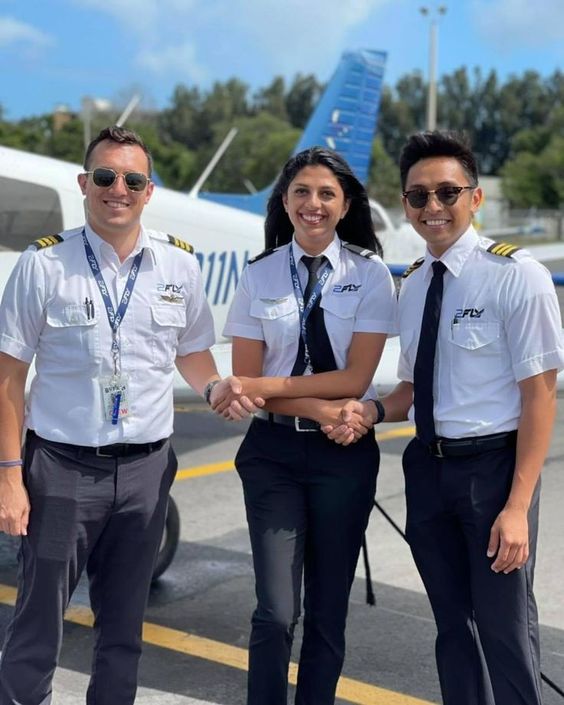
2. Instrument Rating
Once you have your private pilot license, you can fly under visual flight rules (VFR).
VFR allows you to navigate using visual references from outside the aircraft, such as ground landmarks and the horizon.
You must also keep a certain distance from the clouds and meet visibility requirements.
Essentially, if you are flying VFR, you should avoid heavy precipitation, poor visibility, clouds, and other inclement weather.
An instrument rating allows you to fly under instrument flight rules (IFR). When flying IFR, you can fly even when the cloud heights and visibility are lower than those required for VFR operations.
Also, when flying a jet, most operations, with the exception of takeoffs and landings, will take place above 18,000 mean sea level (MSL), where a certificate for instruments is required.
To get an instrument rating, you must complete further flight training for instrument operations and become acquainted with what it is like to fly in the clouds with no external visual references.
There is also another computer based knowledge test and a test ride for the instrument rating.
3. Rating for Multiple Engines
You can fly single engine aircraft if you have a private pilot certificate. Even though this suits the majority of people, you should probably think about obtaining a multiengine rating if you want to pursue a career in aviation.
You will be able to pilot aircraft with multiple engines with this rating.
If your dream is to fly a jet, you will need to add a multiengine rating to your private pilot certificate because single engine jets are extremely rare.
To obtain a multi engine rating, you must still pass the oral exam and the flight portion of the check ride. There is no computer based knowledge test for this rating.
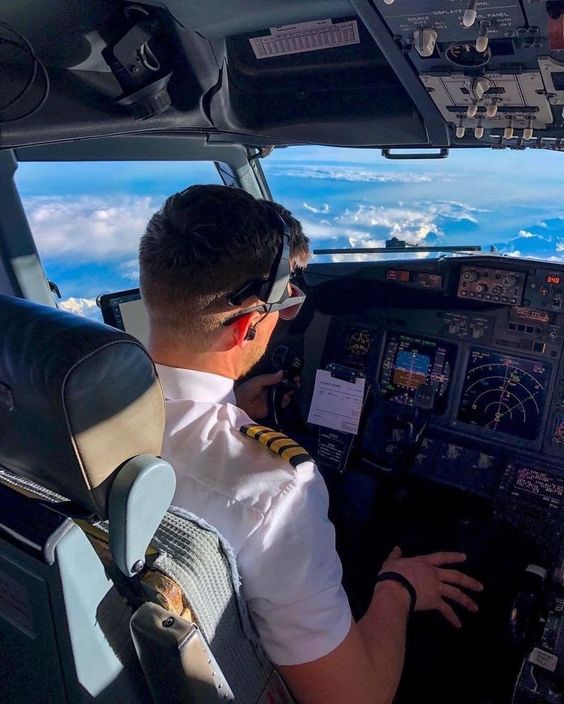
4. Rating by type
You must be granted a type rating, which is relevant to a particular aircraft, in order to operate one.
This suggests that you will require a different type rating if you wish to pilot a jet made by a different company, or even just a different model in some circumstances.
Pilot experience and knowledge requirements for a type rating will be different amongst aircraft and training providers.
A type rating check ride will be evaluated according to airline transport pilot (ATP) standards, which means you will be evaluated within plus or minus zero of your final approach speed, plus or minus 100 feet of the assigned altitude, and plus or minus 10 knots of the assigned airspeed, regardless of your level of pilot certificate.
What Are the Requirements for Pilots Who Fly for Hire?
You are authorized to operate a jet legally once you have obtained the aforementioned ratings and certificates. You are not, however, allowed to fly for hire.
A commercial pilot certificate is required if you intend to operate an aircraft for hire or if you work for an organization that does.
This certificate goes deeper into operations and improves your ability to execute maneuvers with even more accuracy. It is basically an extension of the private pilot certificate.
A knowledge exam and a check ride must be completed in order for you to obtain your commercial certificate.
With a commercial certificate, you can also work for hire in other aviation related fields like air ambulance, aerial firefighting, pipeline and powerline patrol, and aerial surveying.
However, you might need to get further training and endorsements before you can fully execute these roles.
Keep in mind that having a commercial certificate does not entitle you to travel on an airline.
While hiring requirements vary by airline, you will at minimum need to obtain an airline transport pilot (ATP) certificate and complete the required number of hours.
